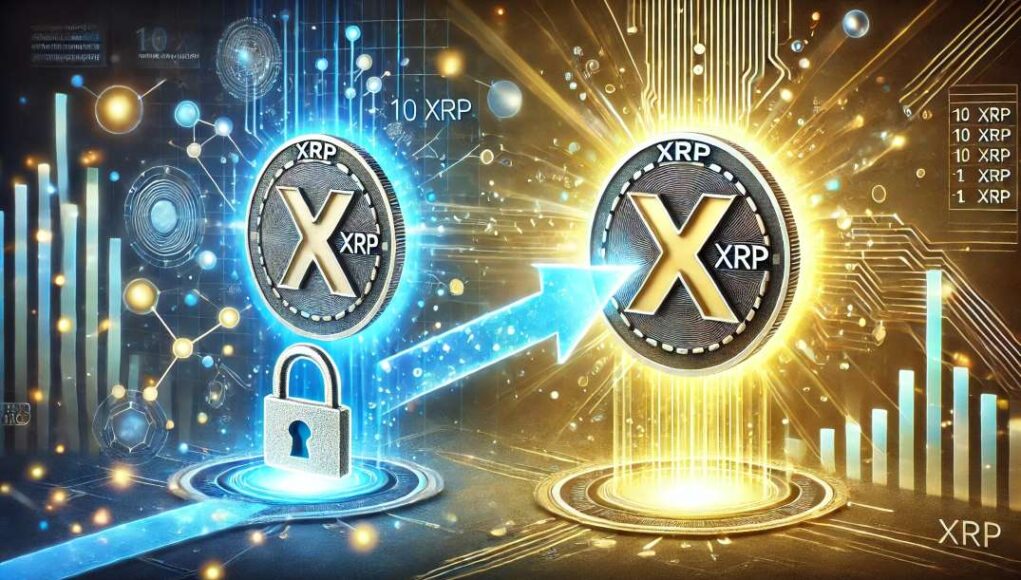Amid growing criticism of its high reserve requirements, the XRP Ledger (XRPL) has taken a bold step by reducing its base reserve from 10 XRP to 1 XRP. That is a drastic 90% cut to improve accessibility and affordability. This policy shift, implemented to remove barriers for small-scale users, has been lauded as a milestone in democratizing blockchain technology. However, the move has also sparked debate among industry experts. Some question whether it adequately addresses deeper issues within the XRPL ecosystem.
Understanding XRP Reserve Requirements
In blockchain systems like the XRPL, reserve requirements serve as a safeguard to prevent spam attacks and ensure network stability. By requiring users to hold a certain amount of XRP in their wallets, the XRPL discourages the creation of low-balance, spam accounts that could overload the network.
Historically, the base reserve of 10 XRP was considered manageable, but recent market dynamics changed that perception. A surge in XRP’s market price – up over 400% in the past month – has made these reserves substantially more expensive in fiat terms. This increase put small-scale users, particularly those in regions with limited purchasing power, at a disadvantage. Critics argued that the reserve fees were no longer proportionate to their original intent, creating barriers to adoption and innovation.
The updated reserve requirement, which now stands at 1 XRP, aims to resolve these challenges. Additionally, the owner reserve – applicable to items like trust lines, escrow, and NFTs – has been reduced from 2 XRP to 0.2 XRP, further decreasing operational costs for XRPL users.
A Response to Market Pressures
The decision to lower reserve requirements is not merely a gesture of goodwill but a strategic response to market conditions and user demands. XRP has experienced a surge in popularity. Reportedly, over 22,000 new wallets were created the day following the reserve adjustment. The XRPL community, including prominent voices like XRPL Labs founder Wietse Wind, has long advocated for this change. They cited the reserve fees as a barrier to entry for small users and developers experimenting with XRPL applications.
The timing of the reduction coincides with a broader push to sustain user engagement and activity on the XRPL amid fierce competition in the blockchain space. Other blockchains, such as Ethereum and Solana, have attracted users with relatively low fees and innovative features. XRPL lowered its reserve requirements to remain competitive and expand its user base, particularly among individuals and startups who the previous costs might have deterred.
Criticism and Skepticism
While the reserve reduction has been widely celebrated, it has not been without its critics. Some experts question whether this adjustment is a long-term solution or merely a short-term measure to maintain relevance amid rising XRP prices.
One area of concern is whether lowering reserve requirements could lead to unintended consequences, such as an increase in spam or underutilized accounts on the network. Historically, reserve requirements have served as a deterrent against these issues. By reducing this barrier, the XRPL may inadvertently create new challenges, requiring robust governance and technological solutions to maintain network integrity.
Another critique focuses on the broader utility of the XRPL. While the reserve reduction makes the network more accessible, it does not address other potential limitations, such as scalability or competition from rival blockchains with more advanced smart contract capabilities. Some analysts argue that without significant innovation in its ecosystem, the XRPL risks being outpaced despite its cost advantages.
A Community-Driven Milestone
The reserve reduction is also a testament to the power of community advocacy within the XRPL ecosystem. Over the years, developers, users, and advocates have voiced concerns about the high reserve fees. They urged the network’s stewards to adapt to evolving market conditions. This change reflects the community’s influence and the responsiveness of XRPL’s governance model.
Beyond cost savings, the lower reserve requirement could open new opportunities for developers to experiment with applications on the XRPL without committing significant capital upfront. This aligns with the blockchain’s mission to foster innovation and inclusivity, particularly in underserved markets where the financial barrier of entry has been a deterrent.
Implications for the Blockchain Industry
The XRPL’s decision to slash reserve requirements could set a precedent for other blockchain networks grappling with similar challenges. As digital assets continue to gain traction, balancing accessibility with security and network integrity becomes a critical consideration. The XRPL’s experience may offer valuable lessons for the industry. It highlights the importance of adaptive policies that cater to user needs while safeguarding the network.
Moreover, this move underscores the growing importance of affordability in driving blockchain adoption. In an era where transaction fees and operational costs can significantly impact user engagement, reducing barriers to entry could become a key competitive advantage for blockchain platforms.
Milestone or Survival Tactic?
The XRP Ledger’s reserve reduction is undeniably a pivotal moment for its ecosystem. It signals a commitment to making blockchain technology more accessible and user-friendly. By lowering costs, the XRPL has positioned itself as a more inclusive platform that can attract a diverse range of users and developers.
However, whether this move will solidify the XRPL’s long-term relevance or merely stave off short-term challenges remains an open question. As the blockchain landscape continues to evolve, the XRPL’s ability to innovate and address deeper ecosystem concerns will ultimately determine its success.
>>> Read more: Bull or Bubble? Experts Divided as XRP Reaches New Heights
For now, the reserve overhaul is a significant step forward. It offers a glimpse into how blockchain networks can adapt to changing market dynamics while staying true to their foundational principles.
Readers’ frequently asked questions
What exactly is the “reserve requirement,” and why does it matter?
The reserve requirement on the XRP Ledger is a mandatory amount of XRP that must be held in a wallet to activate and maintain an account. This reserve is not spendable and exists to prevent spam accounts from overloading the network. Essentially, it acts as a security measure to ensure that only genuine users create accounts. Before the recent reduction, activating an account required holding 10 XRP, which could become costly as the value of XRP increased. By lowering this to 1 XRP, the network makes wallet creation more affordable. It encourages broader participation while still maintaining protection against spam accounts. For someone new to blockchain, this means it’s now cheaper and easier to explore XRP and its applications.
How does the reserve reduction impact me if I already have an XRP wallet?
If you already own an XRP wallet, the reduced reserve requirement means you may have more flexibility in using your funds. The XRP previously held to meet the old 10 XRP reserve requirement will now only need to meet the new 1 XRP standard. However, it’s important to note that you cannot withdraw the reserved amount. It remains locked as part of the XRP Ledger’s rules. Additionally, if you’re using features like trust lines, the reserve for these has also been lowered, potentially freeing up more XRP for other uses. This change reduces the overall cost of maintaining and expanding your activities on the XRP Ledger.
Will reducing the reserve make the network less secure or more prone to spam accounts?
Reducing the reserve requirement does introduce the potential for increased spam accounts, as the financial barrier to creating multiple accounts is now significantly lower. However, the XRP Ledger relies on other mechanisms, such as its consensus protocol and transaction fees, to maintain network security and integrity. These mechanisms ensure malicious actors cannot flood the system without incurring significant costs. The network’s developers and community believe the benefits of making the XRPL more accessible outweigh the risks, and they continue to monitor the network for potential issues. For everyday users, this change should not affect the reliability or security of their transactions.
What Is In It For You? Action Items You Might Want to Consider
Reevaluate Your XRP Wallet Strategy
With the reserve requirement now reduced to 1 XRP, take a moment to review your existing XRP wallets. If you’ve been holding excess XRP purely to meet the previous reserve requirement, you can now consider redistributing those funds for trading, staking, or other opportunities. This change provides more flexibility, so make sure you’re using your capital effectively.
Explore New Opportunities on the XRP Ledger
The lowered reserves for trust lines, NFTs, and other account features make experimenting with XRPL applications more affordable. If you’ve been hesitant to engage with XRPL’s ecosystem due to high costs, now is a great time to explore its DeFi tools, token issuance, or NFT platforms. The reduced fees create a more accessible environment for trying out new strategies.
Monitor XRPL Network Activity for Emerging Trends
The reserve reduction could lead to increased adoption and a surge in new accounts. Stay vigilant about shifts in network activity. Higher wallet creation rates and rising user engagement often signal growing interest in XRPL-related projects. Identifying these trends early could uncover promising trading or investment opportunities linked to XRP or its ecosystem.










